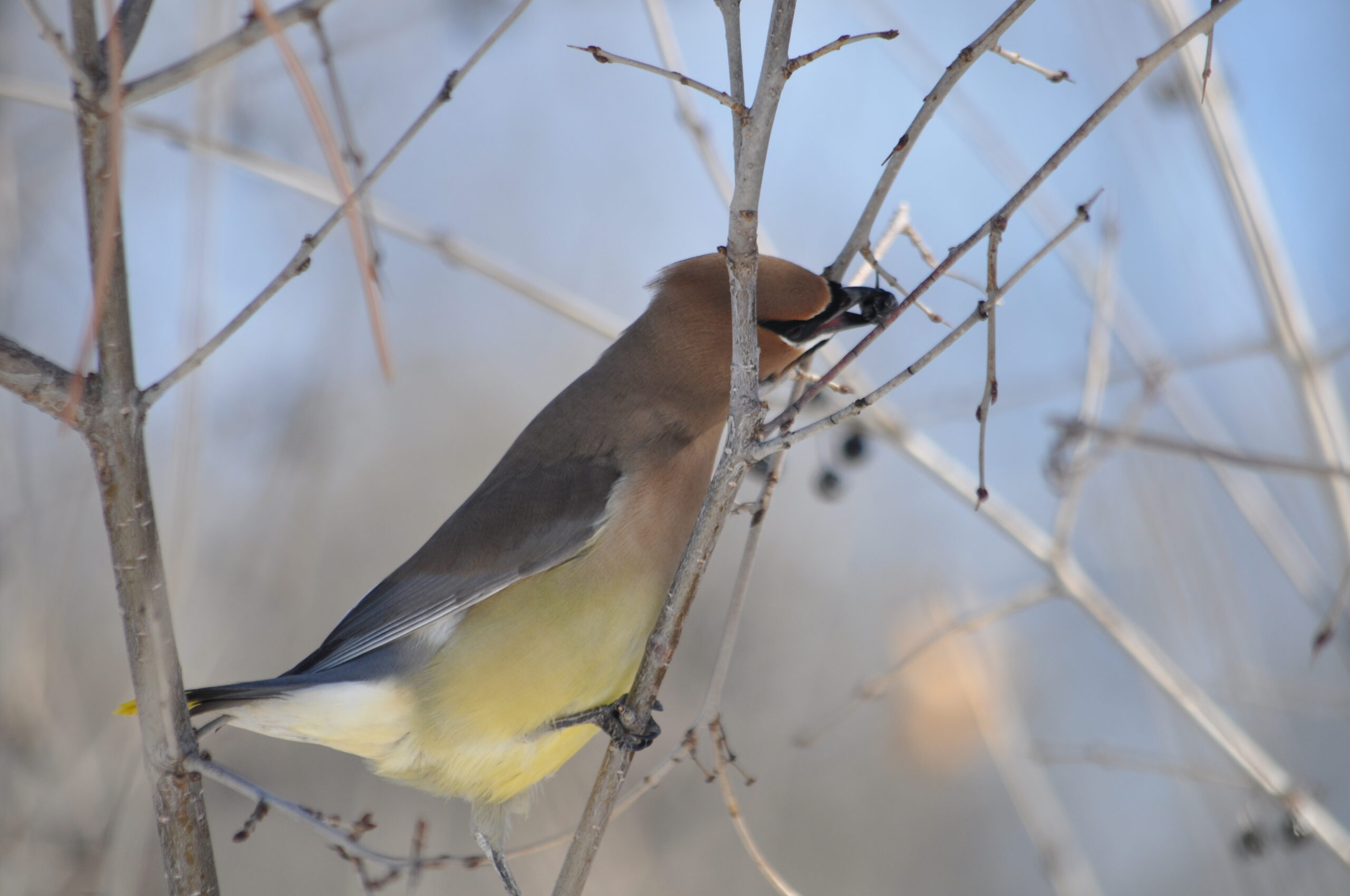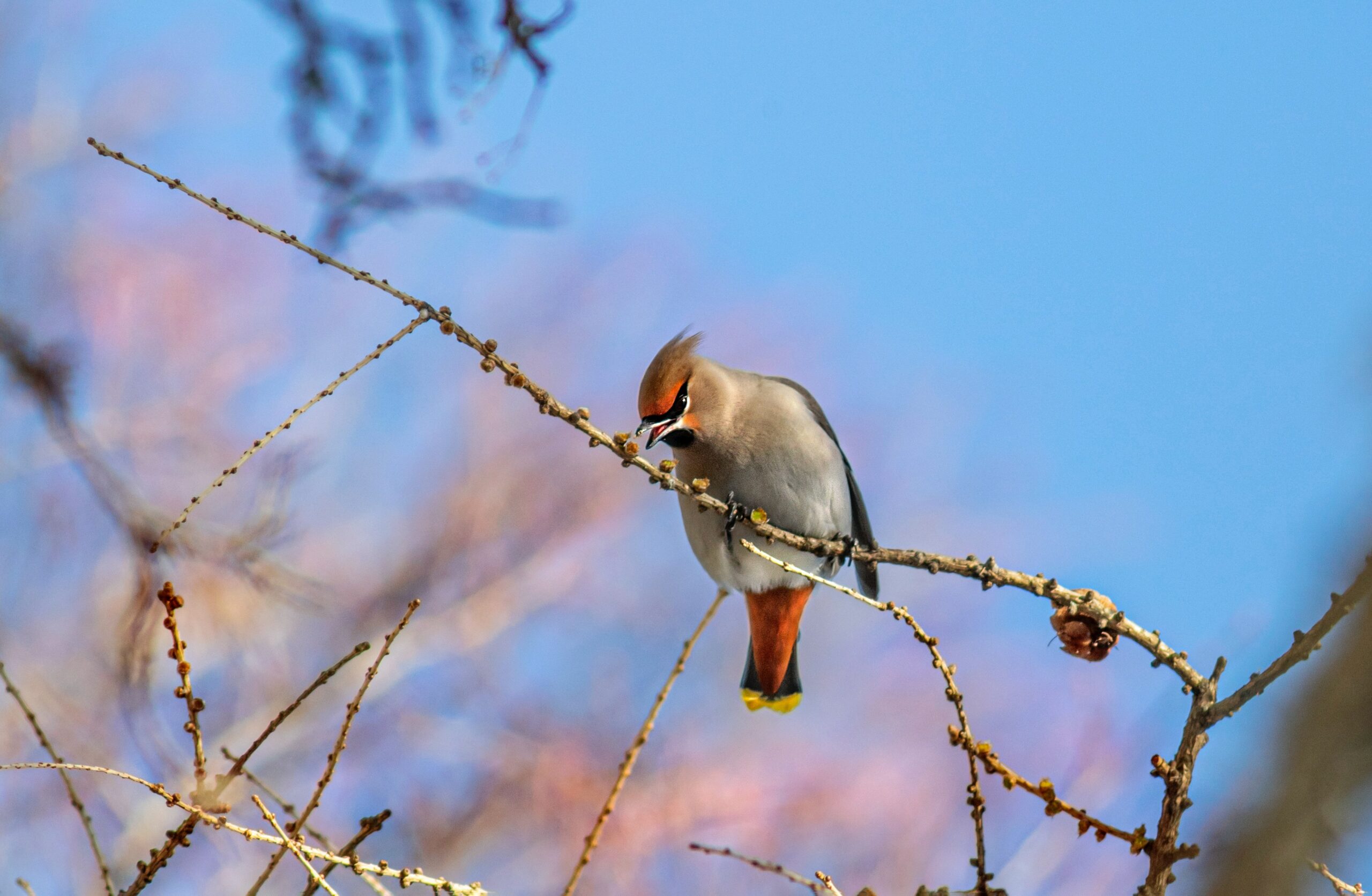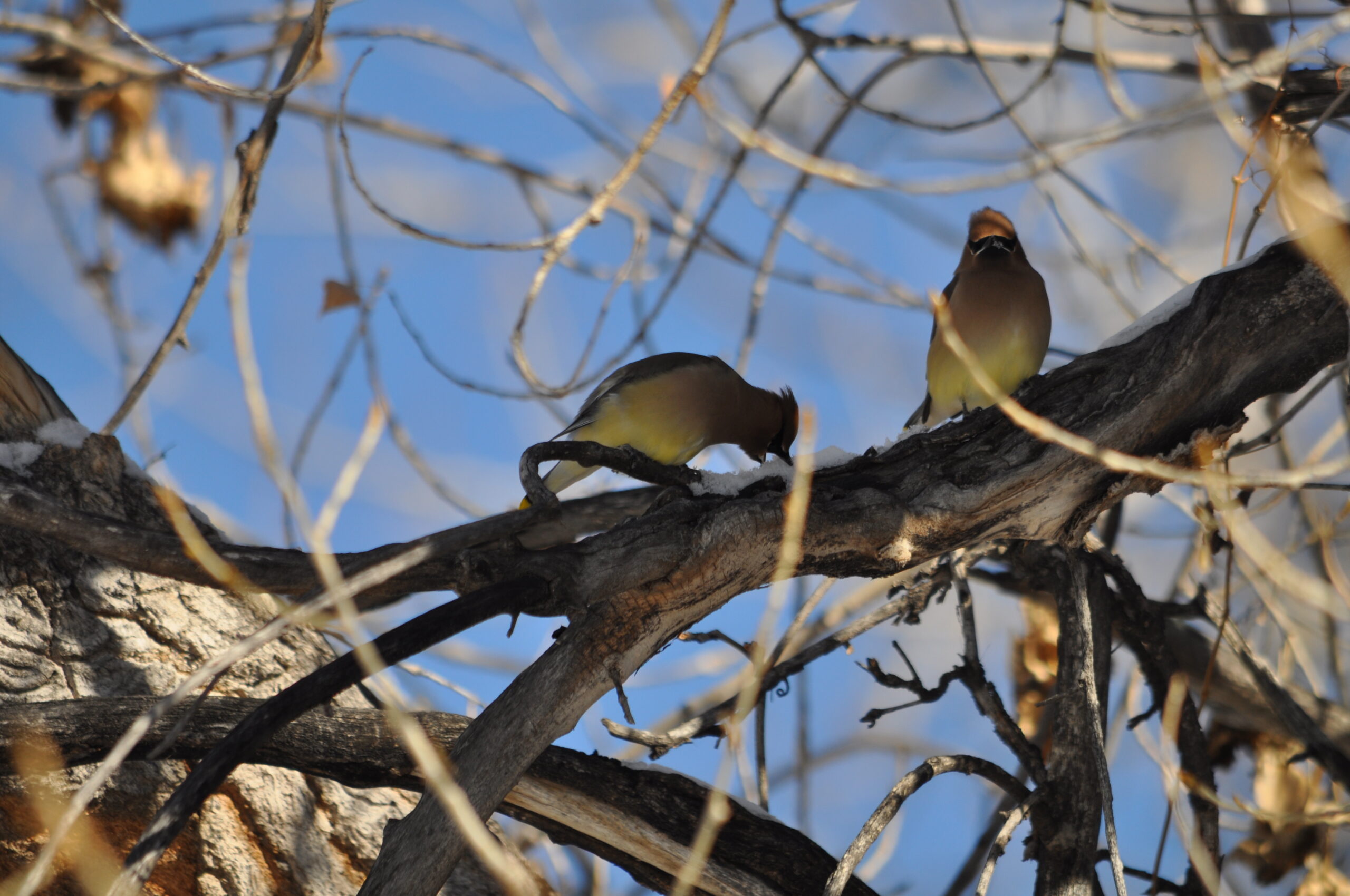On January 1, 2023 Denver area birders celebrated the New Year by participating in the urban Denver Christmas Bird Count. Across the metro area, 135 birders counted 90 species and 30,147 individual birds.
The count area includes a portion of the High Line Canal trail. And it was along the Canal trail, at Three Ponds Park in Cherry Hills Village, that a team of 15 birders watched a single remarkable bird. Amid a large flock of Cedar Waxwings, birder Kristen Miller spotted a Bohemian Waxwing, the first recorded in the count’s 35 years.
Pictured: Bohemian Waxwings by Erik Karits on Unsplash
While Cedar Waxwings can be found in Colorado year-round, Bohemians are much rarer here. They breed in Canada, Alaska, and in the far north of Europe and Asia. It’s generally only in the winter that Colorado birders might spot a Bohemian in the state. And even this is fairly unusual. Most winters come and go without a Bohemian Waxwing sighting.
But some winters bring sizable flocks to the Front Range. The last time this happened was 2013. This winter, it’s happening again. That single Bohemian Waxwing along the High Line Canal trail quickly became a flock, with birders reporting dozens of Bohemians amid hundreds of Cedar Waxwings.
Pictured: Two Cedar Waxwings by Jared Del Rosso
So, what are so many waxwings doing along the High Line Canal trail in Cherry Hills Village? Eating, of course. In the winter, food is the primary concern of birds. Day-by-day, birds need enough calories to survive cold nights.
Both Bohemian and Cedar Waxwings feed on the sugary fruit of trees and shrubs, though both gather protein-rich insects during the warmer months. This is what brings waxwings, as well as sparrows, robins, and starlings, to Chery Hills Village. From Three Ponds Park to Blackmer Lake, a mix of native and non-native plants line the Canal. Most of these have already surrendered their fruits. But among the bare chokecherries, currants and plums is a dense line of a non-native shrub that birds ignore until the middle of winter: Common Buckthorn. Buckthorn’s dark, withered berry-like drupes offer birds and mammals cold-season eats.
Regardless of what they’re eating, both Bohemian and Cedar Waxwings are worth watching. Both species are highly vocal, communicating with others in their flocks with high-pitched calls and trills. They’re highly active, too. Waxwings will stretch, twist, and flit from branch to branch to collect berries and hydrate by munching on snow.
To my eyes, waxwings are among North America’s most striking songbirds. Their feathers are remarkably smooth and silky, giving them an appearance quite unlike most other birds. Overall, their colors are muted browns and grays. But both birds have striking, masked faces. And their tails and feathers are tipped with vibrant yellows and reds.
It can be difficult to distinguish the two species, particularly amid their large, active flocks. But there are some obvious differences to help identify them. Bohemian Waxwings are larger than Cedars, the better to endure northern winters. Bohemians also have deep red undertail feathers, while Cedars have yellow or white ones.
 Pictured: One Cedar Waxwings by Jared Del Rosso
Pictured: One Cedar Waxwings by Jared Del Rosso
But it can sometimes be more difficult to find waxwings than identify. Both Bohemian and Cedar Waxwings are nomadic species. They move from one location to another, exhausting food sources as they go. A thicket may be ripe with berries and waxwings one winter morning. The next, it may be bare.
This is what makes their stays in Cherry Hills Village so remarkable. The Canal has kept giving, through of the first two weeks of January, to hundreds of waxwings, thousands of robins, flocks of sparrows and finches, and all of us, too, who are better off for our encounters with these birds.
Note: While Common Buckthorn aren’t designated as noxious weeds in Colorado, they’re highly invasive and not recommended for yard plantings. If you’re interested in attracting waxwings to your yard, consider native species of junipers and hawthorns, both of which are highly attractive to the birds. Other native shrubs that attract songbirds include serviceberries, Golden Currant and buffaloberry.
———————————
This post and accompanying photos are from Jared Del Rosso, a birder and Conservancy volunteer. Read more about birds, people and culture on his blog lonesomewhippoorwill.com.









